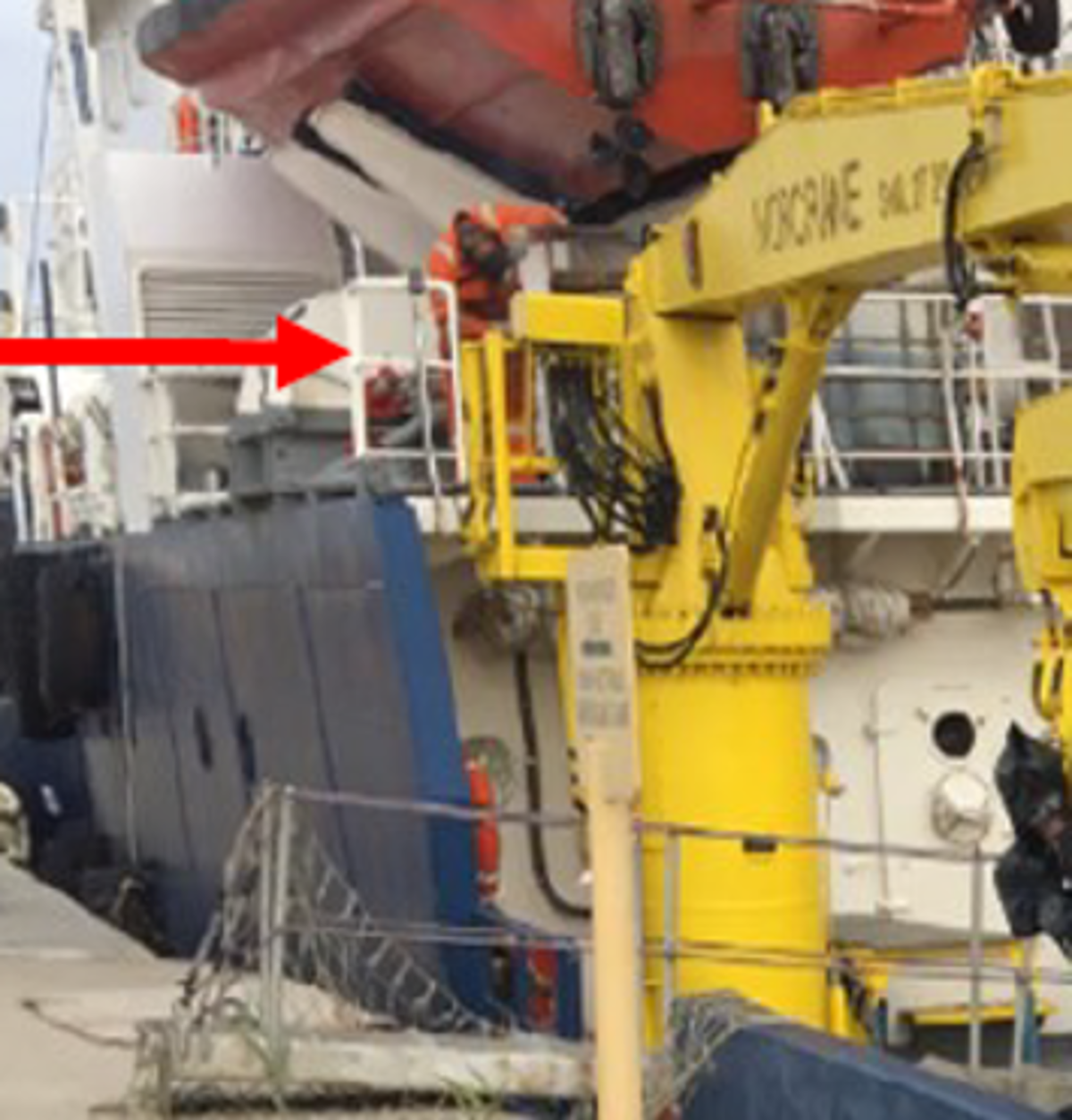Near miss: Failure of work procedures during hot work at height
- Safety Flash
- Published on 6 March 2020
- Generated on 10 December 2025
- IMCA SF 09/20
- 1 minute read
Jump to:
During a crew change handover walk around the vessel hull, the Master observed a welder working close to the open/unsecured edge of a PS davit area
What happened?
The incident occurred during planned installation of additional access support plates at the port side davit area.
A ‘hot work permit to work’ was raised for completion of welding activities; the work area was agreed, a risk assessment conducted, and a toolbox talk (TBT) signed off by all participants.
Welding operations were immediately stopped, and additional fall prevention measures installed.

Red arrow showing welder working with unprotected edge behind and potential to fall into water
What was the cause?
The person authorising the work did not properly assess the work area.
Unprotected edge-related working at height hazards were left unattended with no safety precautions considered.
What went wrong?
- STOP WORK AUTHORITY was not applied.
- Risk seen as tolerable: the person working near the unprotected edge considered the job as a ‘quick 5-minute task, so nothing to worry about’.
Related Safety Flashes
-
IMCA SF 06/20
19 February 2020
-
-
IMCA SF 04/11
19 April 2011
IMCA Safety Flashes summarise key safety matters and incidents, allowing lessons to be more easily learnt for the benefit of the entire offshore industry.
The effectiveness of the IMCA Safety Flash system depends on the industry sharing information and so avoiding repeat incidents. Incidents are classified according to IOGP's Life Saving Rules.
All information is anonymised or sanitised, as appropriate, and warnings for graphic content included where possible.
IMCA makes every effort to ensure both the accuracy and reliability of the information shared, but is not be liable for any guidance and/or recommendation and/or statement herein contained.
The information contained in this document does not fulfil or replace any individual's or Member's legal, regulatory or other duties or obligations in respect of their operations. Individuals and Members remain solely responsible for the safe, lawful and proper conduct of their operations.
Share your safety incidents with IMCA online. Sign-up to receive Safety Flashes straight to your email.